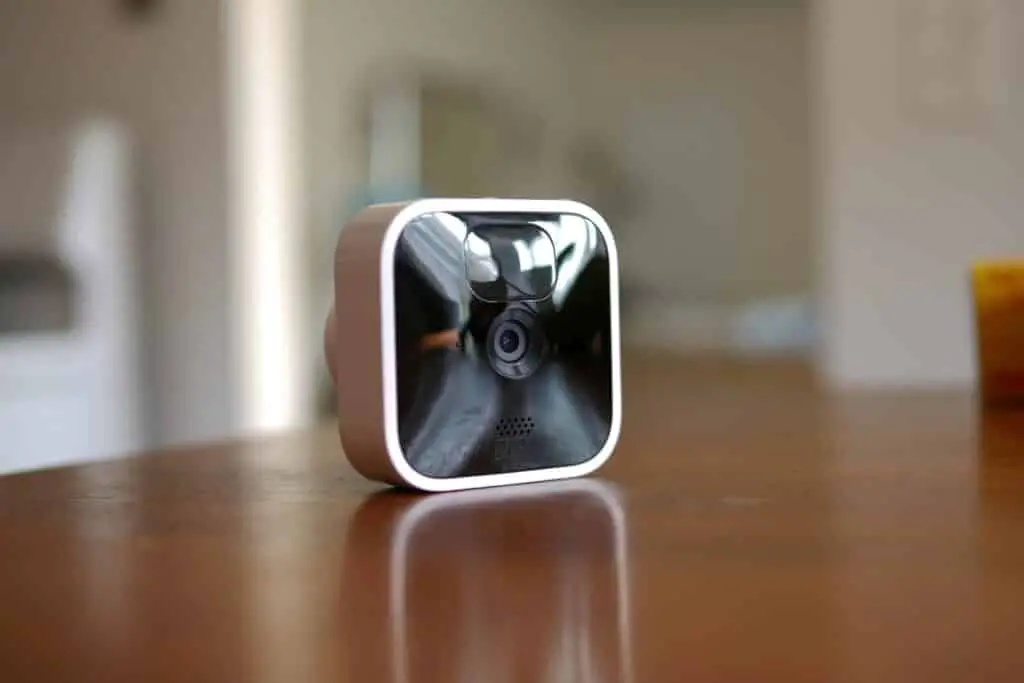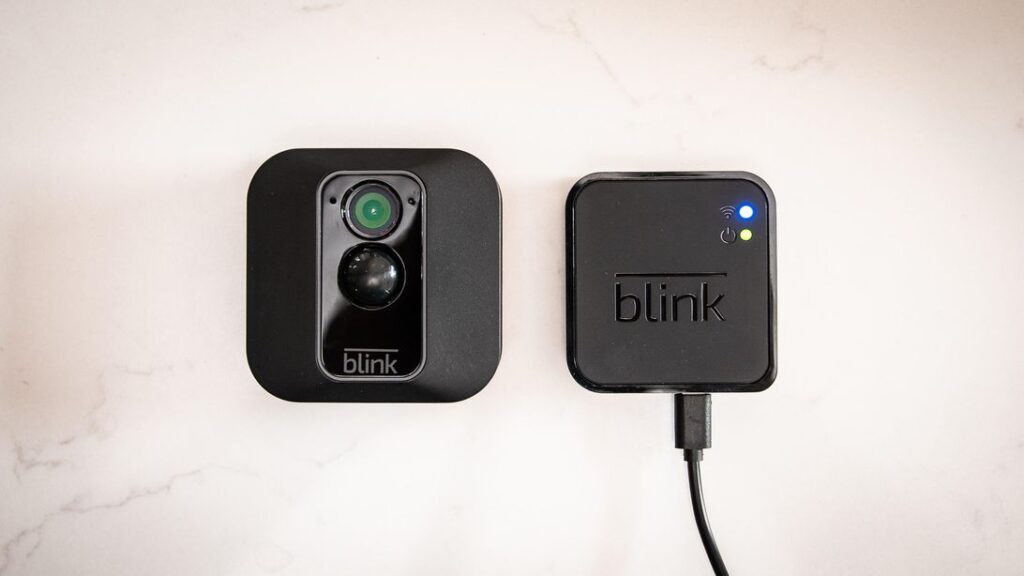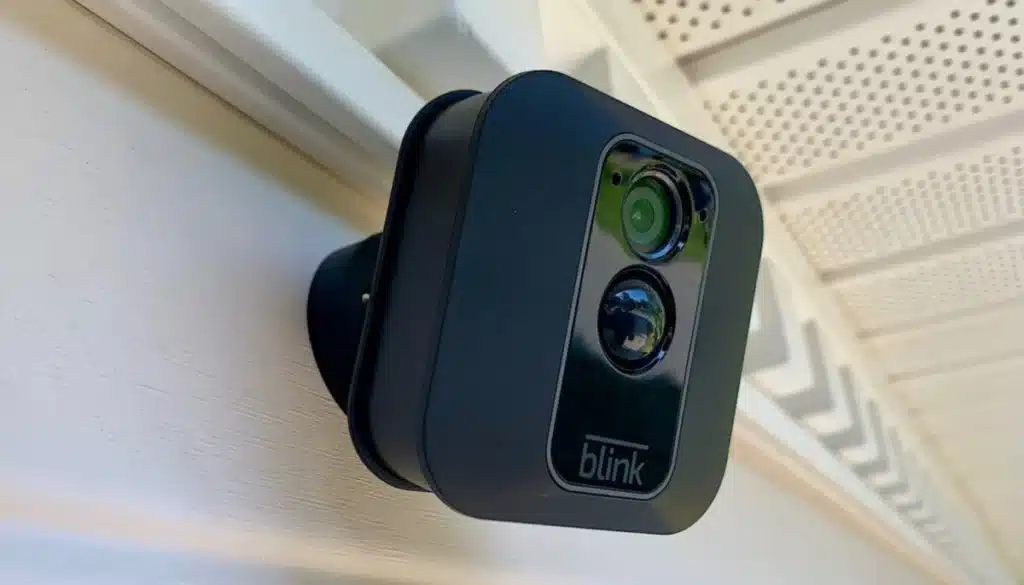Introduction
In an increasingly interconnected world, home security has emerged as a paramount concern for homeowners seeking peace of mind and protection for their loved ones and property. In response to this demand, various surveillance systems have been developed, and one of the most popular options is the Blink camera. Renowned for its ease of use, wireless design, and high-quality performance, the Blink camera offers an efficient solution for monitoring and safeguarding residential spaces.
Blink cameras only begin recording whenever there is activity inside their area of view. This function saves power and eliminates extraneous recordings, however some users may need constant recording for maximum safety and surveillance coverage. However, the default settings of a Blink camera prevent you from achieving continuous recording.
Enabling continuous recording can add an extra layer of security for homeowners, whether they want to feel safer when they’re not around for a long time, keep an eye on certain events, or just for personal taste. In addition to using third-party apps and changing the camera settings, these ways also include adding extra hardware. Whatever the situation, homes can get the most out of their Blink cameras and feel safer with them if they use the right techniques.

How do I get my blink camera to run continuously?
Tap Live View in the home screen.
- Then tap the More menu button in the bottom right of your screen (displays with a red dot the first time you use this feature).
- A screen then displays explaining the terms of Extended Live View, which runs up to 90 minutes; however, you can’t save the session as a clip.
To get your Blink camera to run continuously, you’ll need to explore alternative methods beyond its default motion-triggered recording setting. Because of their focus on low power consumption and small footprint, Blink cameras do not have the option for continuous recording out of the box.
However, with a few adjustments and additional equipment, you can achieve continuous surveillance. Here are some steps to consider:
Third-Party Applications
Investigate third-party applications or software that can interface with your Blink camera and enable continuous recording. Some software is made to ignore the camera’s normal recording settings and keep it rolling at all times.
Camera Settings Modification
Check if your Blink camera allows you to modify its settings through the official Blink app or website. Some models might offer the option to extend the recording time per clip, effectively creating a continuous recording feel.
External Power Source
Connect your Blink camera to a constant power supply using a compatible power adapter. This ensures that the camera remains powered on without relying on battery life, enabling continuous operation.
Video Storage Expansion
To handle the increased data from continuous recording, consider expanding your camera’s storage capacity through compatible SD cards or cloud storage plans.
Multiple Cameras and Scheduling
Alternatively, you can set up multiple Blink cameras and schedule them to rotate recording, mimicking continuous coverage. This method requires careful positioning and synchronization of cameras to minimize blind spots.
Why does my blink camera not always record?
Improper camera settings – motion detection, recording, sensitivity level, etc. We have disabled the Blink system. Neither a local nor a cloud-based storage strategy is currently active. Sync module issues for local storage.
Several factors could contribute to why your Blink camera does not always record as expected. The Blink camera is energy- and space-efficient by design, thus it may not record continuously by default. Here are some common reasons why your Blink camera may not always record:
Motion Detection Settings
By default, Blink cameras are set to trigger recording only when motion is detected within their field of view. If the camera does not detect any motion, it will not initiate recording, leading to gaps in the footage.
Motion Sensitivity
The sensitivity level of the motion sensor could be too low, causing the camera to miss certain events or movements that might not trigger recording.
Motion Detection Zone
If the camera is not positioned correctly, it may miss something happening away from its field of view.
Camera Positioning
Improper camera placement might lead to blind spots or insufficient coverage, causing the camera to miss relevant events.
Limited Battery Life
If your Blink camera is running on batteries, it may not record continuously to preserve power and extend the battery life. Depending on the number of events and settings, the battery may last for several months.
Internet Connectivity
If your camera loses internet connectivity or experiences intermittent issues, it may not upload recorded clips to the cloud, affecting the recording reliability.
Storage Limitations
For cameras using local storage or SD cards, limited storage capacity could result in the camera stopping recording when the storage is full.
Do Blink Cameras keep recordings?
Until you delete them or they reach their auto-delete deadline (60 days in the US or 30 days via the EU/UK), all of your clips will be accessible in the Blink app. With a Blink Subscription plan, you also have unlimited cloud video recording.
Yes, Blink cameras keep recordings, but the retention of recordings depends on the storage option chosen by the user. Blink cameras offer two primary storage options:
Cloud Storage
Blink cameras come with free cloud storage for storing recorded clips. The cloud-based storage of the camera’s recordings makes them available via the Blink app and website. The free cloud storage plan typically retains the recorded clips for a limited period, which is usually around 7 to 14 days. In order to make room for newer recordings, the older ones will be removed automatically when that period of time has passed.
Local Storage
Some Blink camera models allow users to insert an SD card into the camera, providing local storage for recordings. With an SD card, the camera will save the recorded clips directly to the card, and users can access and download these recordings by physically removing the SD card from the camera.
It’s essential to note that the storage options and retention periods may vary depending on the specific Blink camera model and any subscription plans or add-ons purchased by the user. If users need to record continuously or want to keep records for longer, this is the solution. They might consider upgrading to a paid subscription plan that offers extended cloud storage or opt for larger-capacity SD cards for local storage.

How long can Blink Cameras record?
Most Blink cameras, with the exception of Blink Mini, support a maximum clip length of 60 seconds. Blink Mini supports a maximum of 30 seconds of clip length.
The recording duration of Blink cameras depends on several factors, including the camera’s model, the storage option used, the frequency of motion events, and the resolution of the recordings. Here’s an overview of the typical recording durations for Blink cameras:
Motion-Triggered Recordings
When Blink cameras detect motion, they automatically begin recording brief clips. These clips typically last between 5 to 60 seconds, depending on the camera’s settings. Users can adjust the clip length through the Blink app or website to suit their preferences.
Cloud Storage
Blink cameras come with free cloud storage for storing recorded clips. The free cloud storage plan usually retains recordings for around 7 to 14 days. After that time has passed, older clips are deleted to create way for newer recordings.
Local Storage
If a credit card is able to be used as on-board storage, it means you can save for longer.Users can choose SD cards of different sizes, such as 32GB or 64GB, to accommodate more recordings. Once the card reaches its storage limit, the camera may overwrite the oldest recordings to continue saving new ones.
Subscription Plans
Blink offers optional subscription plans that provide extended cloud storage options. Depending on the plan, users can retain recordings for 60 days or more.
Can I watch my Blink camera live?
To start a live view from your Blink camera, say: “Alexa, show [camera name].” To stop a live view, say: “Alexa, stop.”
Yes, you can watch your Blink camera live! Blink cameras offer a live view feature that allows you to see real-time video feeds from your cameras using the Blink app. This feature provides you with immediate access to what your cameras are currently capturing, giving you peace of mind and the ability to monitor your property at any time, from anywhere.
To watch your Blink camera live, follow these general steps:
Download the Blink app
Install the official Blink app on your smartphone or tablet. The app is available for both Android and iOS devices.
Sign in or set up an account
If you already have a Blink account, sign in using your credentials. If not, create a new account to associate your Blink cameras with.
Access the live view
After signing into the app, a list of all of your Blink cameras will be presented to you. Select the camera you wish to view live.
Start live streaming
Tap on the live view option for the selected camera, and the app will initiate the live stream. Within a few moments, you’ll be able to view the real-time video from your Blink camera.
Control camera settings (optional)
While watching the live stream, you may have the option to perform certain actions, such as taking a snapshot, manually recording video, or adjusting the camera’s sensitivity and other settings.
Additionally, the live view feature may have a slight delay, as it takes a moment for the video feed to transmit from the camera to the app. With the ability to watch your Blink camera live, you can keep an eye on your home or property whenever you want, making it a convenient and effective way to enhance your security and surveillance efforts.
Why doesn’t my Blink camera record at night?
If your Blink Camera is not recording at night, check and enable the Night Vision feature. If the camera has trouble detecting motion at night, increase the motion sensitivity. Network issues can also render Blink Cameras unusable.
If your Blink camera doesn’t record at night, several factors could be contributing to the issue. Here are some common reasons why your Blink camera may not record during nighttime:
Night Vision Mode
Blink cameras include infrared LEDs for use in low-light conditions. Make sure the camera’s night vision feature is turned on. The camera could fail to function in low light if the night vision is turned off.
Insufficient Lighting
Blink cameras rely on adequate lighting to detect motion and record clips. However, the camera’s motion sensor may fail to function properly in low-light or poorly lit environments.
Motion Sensor Sensitivity
Check the motion sensor sensitivity settings in the Blink app or website. If the sensitivity level is too low, the camera may not trigger recordings for subtle or distant movements, especially in low-light conditions.
Motion Detection Zone
Review the camera’s motion detection zone settings. If the zone does not cover the areas with potential movement at night, the camera might not record events that occur outside the designated zone.
Camera Positioning
The camera’s position and angle can significantly affect its ability to detect motion at night. For the camera to provide the best possible coverage, make sure it is positioned securely and pointed in the appropriate direction.
Camera Firmware or App Issues
Check for any firmware updates for your Blink camera and ensure that you are using the latest version of the Blink app. Outdated software could cause performance issues, including problems with nighttime recording.
Does Blink automatically delete recordings?
If you subscribe to a Blink package that includes Cloud Storage, your clips will be destroyed after a set amount of time. The maximum retention term for EU and UK consumers is 30 days, whereas the default retention time is 60 days.
Yes, Blink cameras automatically delete recordings to manage storage efficiently, especially for users who have limited cloud storage capacity or use local storage options. The retention period for recordings depends on the storage plan chosen by the user, camera model, and any associated subscription options.
For users with the free cloud storage plan, Blink cameras typically retain recorded clips for about 7 to 14 days. In order to make room for fresh recordings, the oldest movies are removed after this time period. This helps ensure that users have access to recent events and that the camera continues to function properly without running out of storage.
Users who opt for Blink’s paid subscription plans can enjoy extended cloud storage options, allowing them to retain recordings for a longer duration, such as 60 days or more, depending on the plan. For cameras with local storage through an SD card, once the storage reaches its capacity, the camera may overwrite the oldest recordings to continue saving new ones.
Why does my blink camera record every hour?
If your camera loses internet connectivity, it continues to capture images every hour.
If your Blink camera is recording every hour, it could be due to a misconfiguration in the camera’s settings or a technical issue. Here are some potential reasons why your Blink camera may be recording at regular intervals:
Motion Sensitivity Settings
Check the motion sensitivity settings in the Blink app or website. If the sensitivity level is set too high, the camera may be detecting minor movements or changes in lighting, triggering recordings every hour.
Motion Detection Zone
Review the camera’s motion detection zone settings. If the camera is monitoring an area with consistent movement, such as moving shadows or lights, it may result in regular hourly recordings.
False Alarms
External factors, such as insects or small animals, could be triggering false motion alerts, leading to recordings every hour.
Interference or Glitch
Technical glitches or interference in the camera’s motion detection system could cause continuous recordings.
Camera Firmware or App Issues
Ensure that your Blink camera’s firmware is up to date and that you are using the latest version of the Blink app. Outdated software could cause irregular behavior.
Power or Connectivity Problems
If the camera is experiencing power or connectivity issues, it may cause disruptions in its normal functioning, resulting in frequent recordings.
Do Blink cameras record without Wi-Fi?
The answer is yes, but with limited functionality. Blink cameras are designed to work with a WiFi connection, which allows them to send alerts and video footage to your smartphone or tablet. Without WiFi, the cameras can still record video footage, but you won’t be able to access it remotely.
Blink cameras require an active Wi-Fi connection to function and record properly. Without a Wi-Fi connection, Blink cameras will not be able to communicate with the Blink servers and cloud storage, which are essential for recording and storing motion-triggered clips.
When a Blink camera detects motion, it captures a short video clip and sends it to the Blink servers through the Wi-Fi connection. From there, the recorded clips are stored in the Blink cloud or, if applicable, on a local SD card.
Without Wi-Fi, the camera cannot upload the recorded clips, and there will be no way to access or view the recordings remotely. Additionally, the lack of Wi-Fi connectivity would prevent the camera from sending motion alerts to the user’s smartphone or other devices.
It’s worth noting that while Blink cameras require Wi-Fi for regular operation and cloud storage, some models might have an option to record to a local SD card even without an active Wi-Fi connection. However, in such cases, the ability to remotely access or view the recordings would be limited to the times when the camera is connected to the same network as the viewing device.

Conclusion
Achieving continuous recording on a Blink camera is feasible with careful consideration and implementation of various methods. While the camera’s default motion-triggered recording is energy-efficient and practical for many users, there are instances where continuous surveillance is essential to meet specific security needs. From utilizing third-party applications to modifying camera settings and integrating additional hardware, each method presents its unique advantages and challenges. Users must weigh these factors against their requirements to find the most suitable solution for their situation.
Additionally, users should be mindful of adhering to relevant privacy laws and regulations when employing continuous surveillance, ensuring that the rights and privacy of others are respected. Ultimately, making a Blink camera record all the time empowers homeowners with a heightened sense of security and peace of mind, knowing that their property and loved ones are continuously monitored. Whether it’s protecting against potential intruders, monitoring specific events, or simply maintaining an extra layer of vigilance, continuous recording can prove to be a valuable asset in safeguarding residential spaces.
As technology continues to evolve, future advancements in Blink cameras and related surveillance systems may provide more accessible and integrated solutions for continuous recording. By understanding and implementing the appropriate method, homeowners can capitalize on their Blink camera’s capabilities, transforming it into a reliable and steadfast guardian, providing unwavering protection and vigilance for their cherished spaces.

